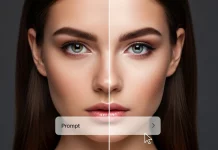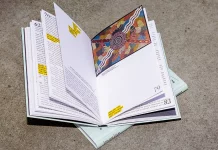This post contains affiliate links. We may earn a commission if you click on them and make a purchase. It’s at no extra cost to you and helps us run this site. Thanks for your support!
Twins Portrait Photography.
“Identical: Portraits of Twins” is a new monograph by the well known photographer Martin Schoeller with a foreword written by artist Marina Abramović. The book is based on a project that first appeared in the January 2012 issue of National Geographic. Thereafter Martin Schoeller visited the National Twins Day Festival in Twinsburg, Ohio to capture twins, triplets and quadruplets. He took pictures of twins side by side in his typical “close up” style. That enables viewers to compare the faces of the genetically identical.
“Identical – Portraits of Twins” by Photographer Martin Schoeller is available on Amazon.com





Buy: “Identical – Portraits of Twins” by Photographer Martin Schoeller on Amazon.com
Artist Statement: A photographic close-up is perhaps the purest form of portraiture, creating a confrontation between the viewer and the subject that daily interaction makes impossible, or at least impolite. In a close-up, the impact stems largely from the static subject’s expression or apparent lack thereof, so the viewer is challenged to read a face without the benefit of the environmental cues we naturally use to form our interpersonal reactions.
For better or worse, out of instinct or learned vanity, we make our way alone in the world, believing our struggles to be distinctive, and operating within what critic Hillel Schwartz’s has termed “the despair of uniqueness.” Few worldly phenomena challenge this default outlook like the fact of the identical twin. Inheritors of the same genetic information, they are, in biological terms, the same person twice or thrice and in very rare cases even four times repeated. They embody sameness and symmetry in the human form as literally and precisely as nature permits. They are often perceived accordingly, as a unit or extension, rather than the individuals we all assume ourselves to be.
Photographing these particular categories of sibling individually and presenting them side-by-side gives the viewer the opportunity to explore this subject from what I hope will be a different point of view. The proximity of apparent sameness, identically framed and supported by our drive to recognize and emphasize patterns, gives us a chance to carefully consider how we look at a face—unfamiliar, unforgettable, detested, or adored. We make these assessments constantly, without thinking. I would like us to slow down and consider the countless small associations and fine distinctions that make up each of these casual appraisals.
Why do such strong visceral responses commonly accompany the mere mention of the subject of twin-hood and the assumptions we bring to the idea of sharing so much of our physicality with another person? What fuels this fascination with rare levels of resemblance and the ways in which it may confuse our assumptions about originality?
Questioning the principles that define the sameness and differences of identical siblings is a study of the core habits of perception—the extent to which our environment impacts our development and our expectations, our preferences, and our choices. We assemble impressions of and form mysterious attachments to universal features—hairline, forehead, eyes, nose, mouth, and chin. We take their arrangements to be unique. Identical twins dispute that assumption.















